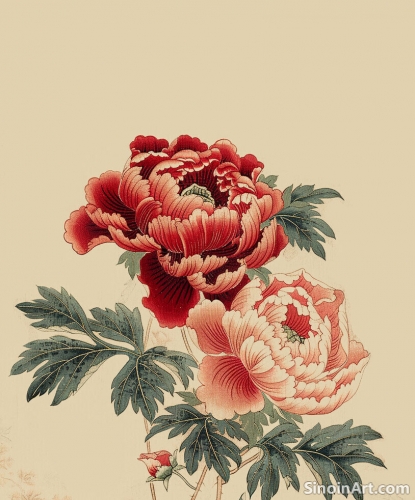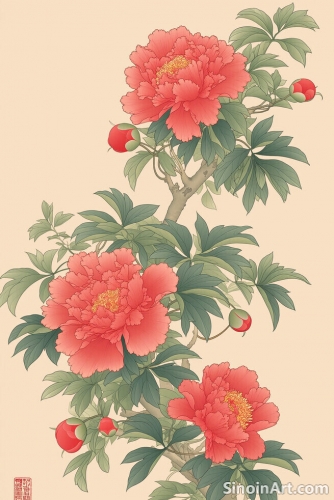The Influence of Western Art on Contemporary Gongbi Painting
|
While Gongbi painting is a deeply rooted tradition within Chinese culture, it has not existed in isolation. The exchange of ideas and artistic styles between East and West has influenced the art form, particularly in the contemporary era. Contemporary artists have embraced Western artistic techniques and approaches, creating a new hybrid form of expression that reflects the cultural exchange between the two worlds.  One of the significant influences of Western art on Gongbi painting is the introduction of new perspectives and compositions. Western art styles, such as realism and impressionism, have encouraged artists to experiment with different viewpoints and approaches to depicting their subjects. This is seen in both landscapes and portraiture where elements of realism have blended with traditional techniques.  The use of perspective, a technique that was not a traditional focus in Chinese art, is now being incorporated into Gongbi painting. This has added a sense of depth and realism to the artworks. Artists are now blending perspective from the West with the flat compositional style traditional in Gongbi.  The introduction of new materials and techniques has also been influenced by Western art. Artists are exploring new pigment colors and mediums and adapting them to traditional techniques. Experimentation with Western materials in the creation of these traditional works is expanding the boundaries of the art. The themes explored in contemporary Gongbi painting have also been influenced by Western art and contemporary social trends. Artists are creating works that address modern social and political issues, exploring individual identity, and challenging cultural norms. Contemporary artists are using their art to express their personal views and social observations. The blending of Western and Eastern influences has created a unique and vibrant contemporary Gongbi style. Artists are now bridging cultural divides and creating art that is both rooted in tradition and relevant to the modern world. This fusion creates a style that honors both tradition and pushes the art form forward. |
Tag : Western influence on Gongbi, contemporary Chinese art, art fusion, cross-cultural art, East meets West
Related information
- Gongbi and the Use of Stippling and Pointillism Techniques
- Gongbi Painting and the Depiction of Historical Events
- Gongbi and Xieyi: Two Sides of the Brush
- Gongbi Painting as a Form of Meditation and Mindfulness
- The Materials of Gongbi: A Palette of Tradition
This article explores the use of stippling and pointillism techniques in Gongbi painting, highlighting how the careful application of dots or points of color creates unique textures, visual effects, and expands the range of expression within this traditional art form.
This article explores the role of Gongbi painting in documenting and interpreting historical events, highlighting its meticulous detail, portrayal of figures, use of color, and how these works act as both visual records and cultural perspectives on the past.
This article contrasts Gongbi and Xieyi painting styles, highlighting their differing approaches to brushwork, techniques, subject matter, and overall artistic expression.
This article explores the connection between Gongbi painting and meditation, highlighting how the meticulous process fosters mindfulness, focus, and a contemplative state of mind for the artist.
This article explores the essential materials used in Gongbi painting, focusing on the unique characteristics of brushes, silk, xuan paper, mineral pigments, and other tools.